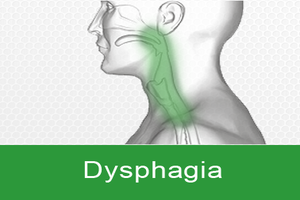- Home
- Editorial
- News
- Practice Guidelines
- Anesthesiology Guidelines
- Cancer Guidelines
- Cardiac Sciences Guidelines
- Critical Care Guidelines
- Dentistry Guidelines
- Dermatology Guidelines
- Diabetes and Endo Guidelines
- Diagnostics Guidelines
- ENT Guidelines
- Featured Practice Guidelines
- Gastroenterology Guidelines
- Geriatrics Guidelines
- Medicine Guidelines
- Nephrology Guidelines
- Neurosciences Guidelines
- Obs and Gynae Guidelines
- Ophthalmology Guidelines
- Orthopaedics Guidelines
- Paediatrics Guidelines
- Psychiatry Guidelines
- Pulmonology Guidelines
- Radiology Guidelines
- Surgery Guidelines
- Urology Guidelines
Approach To Dysphagia - Standard Treatment Guidelines

The Ministry of Health and Family Welfare has issued the Standard Treatment Guidelines Gastroenterological Diseases for Approach To Dysphagia. Following are the major recommendations :
Case definition
Dysphagia is defined as difficulty or inability to transfer food from the oral cavity to the stomach.
Incidence of Dysphagia
Differential Diagnosis
| Oropharyngeal | Esophageal |
Mechanical
| Mechanical
|
Motor
| Motor
|
Prevention and Counselling
Optimal diagnostic criteria, Investigations, Treatment and Referral Criteria
Clinical diagnosis:
Investigations:
- Prior to investigations for oropharyngeal/esophageal lesions, systemic illnesses causing dysphagia (stroke, Parkinson’s disease, Myasthenia gravis, etc.) should be considered and appropriately evaluated.
- For structural oropharyngeal dysphagia, a nasopharyngeal endoscopy is appropriate. Specimen from lesions should be obtained for histopathology and/or microbiological evaluation. For motor oropharyngeal dysphagia, video-fluo roscopic swallowing study is the best modality.
- In patients with structural esophageal dysphagia, upper gastrointestinal endoscopy is appropriate as it enables better characterisation of lesion and collection of specimen for histopathology and/or microbiological evaluation.In suspected esophageal motility disorder, barium swallow study may be the appropriate initial test. For further characterisation of the motility disorder, patient may be referred to a higher center for esophageal manometry.
Treatment:
Standard Operating Procedure
Referral criteria:
Clinical diagnosis:
Investigations:
Treatment:
Oropharyngeal dysphagia:
1. Treatment of neuromuscular causes is difficult but in conditions like myasthenia gravis and Parkinson’s disease medical therapy may be useful.
2. Adequate nutrition is crucial. Thick fluids or soft solids are better tolerated.
3. If risk of aspiration is high, feeding through nasogastric tube may be considered or percutaneous endoscopic gastrostomy may be performed. If percutaneous endoscopic gastrostomy is not feasible, surgical gastrostomy/jejunostomy may be performed for feeding.
4. For infective lesions, antibiotics may be used. For malignant lesions a multidisciplinary approach involving the surgeon, radiotherapist and oncologist is required.
Esophageal dysphagia: Treatment depends on the disease.
1. Achalasia Cardia:
a) For surgically low risk patients, graded pneumatic dilatation should be performed.
b) If two sessions of pneumatic dilatation does not provide adequate symptom relief, surgical (laparoscopic or open) myotomy of lower esophageal sphincter should be performed. Direct referral of patients for surgery is also an option.
c) For high risk surgical patients, botulinum toxin injection in the LES region may provide short term symptom relief.
2. Strictures (Corrosive, Radiation, Peptic and Anastomotic):
a) Endoscopic dilatation (bougie dilators) is the preferred initial treatment if feasible. Repeated dilatations may be required.
b) For long, tight strictures or those with frequent recurrence of symptoms after endoscopic dilatation, surgery may be considered. For short strictures dilatation using CRE (Controlled Radial Expansion) under endoscopic vision is effective. For Anastomotic strictures, dilatation using CRE balloons is beneficial.
3. Esophageal tumours:
4. Esophageal webs and rings:
5. Other conditions:
Standard Operating Procedure
Referral criteria:
Who does what and timelines?
a. Doctor:
1. Within one hour of patient’s arrival at the hospital
Initial resuscitation if patient is sick, dehydrated, etc,.
History and clinical examination
Need for hospitalisation
After the patient is stabilised
Planning further diagnostic tests
Explaining the condition to patients and relatives and obtaining informed consent for procedures
Definitive treatment of the patient
Referral to other specialists in the same hospital or to other centers
b. Nurse:
1. On patient’s arrival at the hospital - Measure blood pressure, pulse rate, breathing rate and level of consciousness and inquire about the chief complaint. The doctor should be accordingly informed.
2. Obtain intravenous access, collect blood samples for investigations and carry out treatment orders for patients requiring emergency care.
3. Assist the doctor in performing procedures, surgery, etc.
c. Technician
1. Set up and maintenance of equipments required for emergency or elective care
2. Assist the doctor during endoscopic or surgical procedures
3. Keep a ready stock of instruments/accessories required for emergency or elective procedures
Guidelines by The Ministry of Health and Family Welfare :
Dr Ashok Chacko Department of Gastroenterology, Christian Medical College

Disclaimer: This site is primarily intended for healthcare professionals. Any content/information on this website does not replace the advice of medical and/or health professionals and should not be construed as medical/diagnostic advice/endorsement or prescription. Use of this site is subject to our terms of use, privacy policy, advertisement policy. © 2020 Minerva Medical Treatment Pvt Ltd